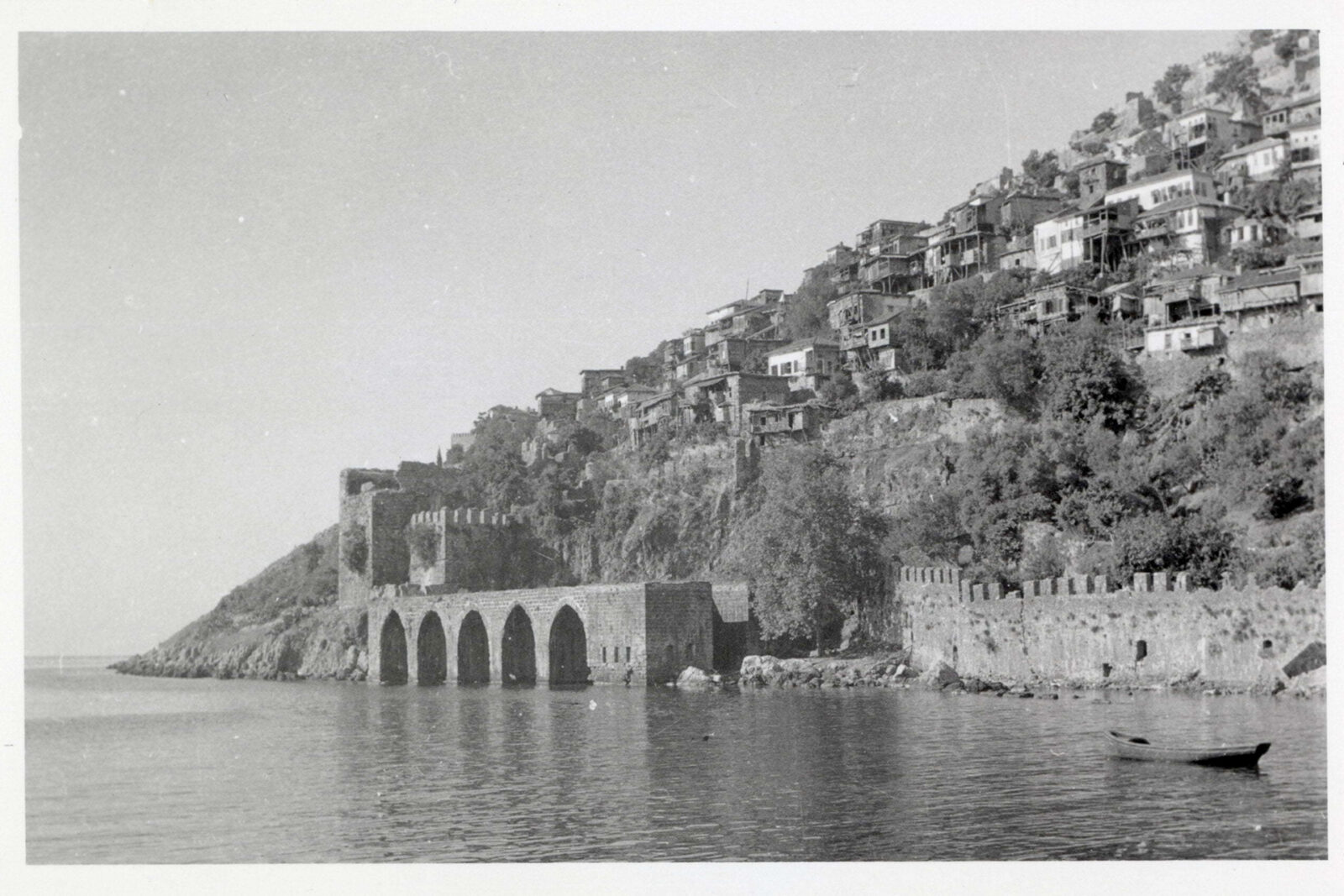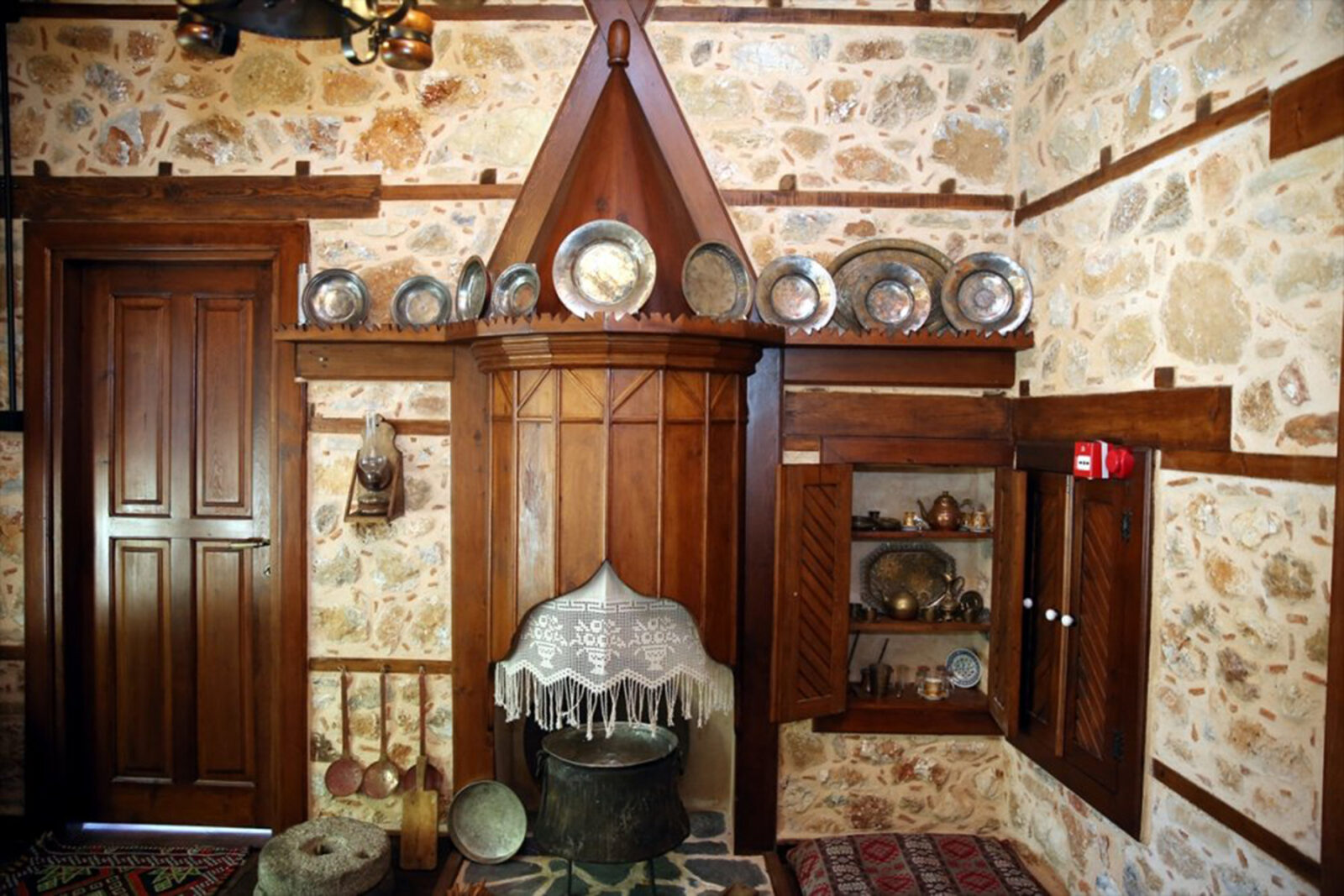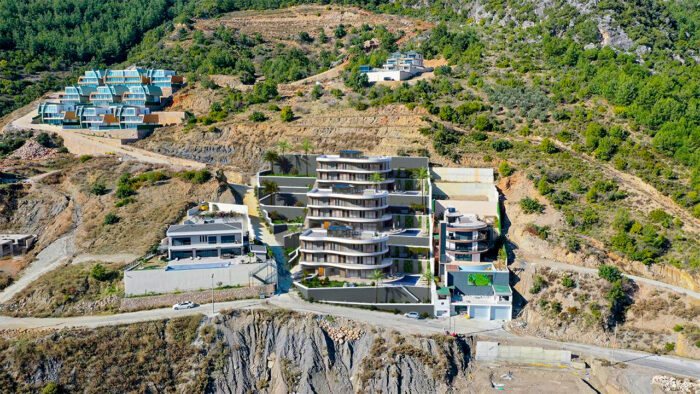Architectural Heritage of the Area
Alanya, Antalya, Turkey
Status: Active
Alanya Kale (Castle), Red Tower (Kızıl Kule) & Tersane (Shipyard):
This formidable and iconic fortress is built on a rocky peninsula jutting into the Mediterranean Sea, which protects it from three sides. Most of the Castle-Red Tower-Shipyard was built in the 13th century under the Seljuq Sultanate of Rûm following the city’s conquest in 1220 by Alaeddin Keykubad I. The castle was built on the remnants of earlier Byzantine and Roman era fortifications but its foundations date back to the Hellenistic period (323 BC). It is surrounded by a 6,5 kilometres (4 miles) long wall, equipped with 140 towers and 400 different cisterns. At the highest section, which is the western part of the hill, the fortress is 250 meters (820 feet) above sea level. The eastern walls extend all the way to the sea, at the Red Tower and incorporated arched main and auxiliary gates with inscriptions on them, many of which are now damaged. The tower, designed by Ebu Ali from Aleppo, is 33 meters (108 feet) tall with an octagonal form, its name comes from the red bricks used in the construction of its top while the lower section was constructed with local stone. It has five floors with the lowest floor currently used for exhibitions. The shipyard, measuring 56 x 44 meters (183 x 144 feet), has five arched and inter-connected galleries by the sea, with crests and “Sultan of two Sea” inscriptions, where large warships of the time were built. It also contained offices and a small mosque located on the left of the entrance and a gun house standing on a rock, where cannons for battleships were made. There are several old buildings inside the castle, such as Seljuk cisterns, Byzantine churches, the Süleymaniye mosque and caravanserai, the Keykubat Sultan Palace and the ruins of a Seljuk bath. After the area was pacified under the Ottoman Empire, the castle ceased to be purely defensive, and numerous villas were built inside the walls. Alanya Castle and Tersane are named on the UNESCO World Heritage Sites 2009 Tentative List.
Korakesium Ev.
Inside the castle walls there are numerous historic villas, an eclectic arrangement of well preserved and stressed examples of 18th and 19th century second Ottoman reign architecture which were built by the Sultans nobility for their relations and servants to support their sustainably living. Korakesium Ev (House) was part of this initial development, embedded into the fortress slopes and overhanging the narrow cobble access, embracing the essence of a “Turkish” home. (the Turkish reference is sometimes preferred to set aside the cosmopolitan ethos of the Ottoman era with a more modern identity and to affirm its sovereignty). The villa utilizes Ottoman “core area” architectural style with a narrow stone base with the integration of masonry and timber on the second story supported by wooden “cantilever beams”.
Certain basic and constant features establish a Turkish house: timber frame and infill construction (with the infill material ranging from bricks to wood “bagdadi or himis”) plastered over in lesser examples and finished in wood if more elaborate, the solidity of the ground floor (reserved for hay storage, animals, carriages and services, etc.) above which are much lighter and projecting living floors, raised on stilts “direklik”. Other characteristic features include rows of modular windows, lightness, transparency, sofa (semi open space) plan and modular logic, all within a skeletal construction. A strongly symmetrical design whose centre is located in the double-height grand entrance hall, which distributes the surrounding spaces and also functions as an internal courtyard. Red roof tiles, reminiscent of Ottoman influences, are a dominating feature, the use of local timber for the creation of doors, windows, extended verandas, wall panelling, floors, furniture and fireplace features are evident throughout. The juts in upper floors were created using wooden beams which are relied on wooden clamps. The distance between wooden frames is filled with brick or adobe with the pores covered in plaster and painted.
The sofa plan concept is rooted in “middle space” which is retrieved from nomadic life i.e. the separation of the living space from nature, “Introversion” or “closure to the outside”, which is also related to the extended family. The home is both for large gatherings and private spaces which are interlinked. The inner designs of the rooms adopts the concept of flexibility”, portable ground covers as carpets, kilims, felt; inner space elements such as beds, divans, chests; are all moveable objects which gives the ability to use the same space for different purposes during the day. “The components of the interior space and the specific rooms therein consist of spatial components which contribute to form and enrich there functionality.
Each room contains all requirements of an independent life for a small family. In order to preserve the privacy of rooms, wooden grate windows, some with elegant decoration are utilized. The detail, decoration and the function of a Turkish (Ottoman) house is principally an internal quality, external appearance is not always the dominating factor.
Although many centuries old, Korakesium Ev is a testament to the endurance, resilience and cultural vision of bygone generations, it still echo’s current and future living ethos. It’s south western aspect absorbs the natural sunlight and subjugates over the Alanya harbour and the majestic white sea (Akdeniz).
Alanya town is located on the southern coastline of Turkey approximately 130 kilometers (80 miles) to the east of Antalya, on a peninsula between the Mediterranean Sea to the south and the Taurus Mountains to the north. It’s one of many popular holiday destinations of Turkey today especially for Sun – Sea – Sand lovers. It has many blue flag beaches, luxury hotels and resorts along the coast on sandy beaches. Every year millions of tourists choose Alanya for their holidays. The Alanya Region hosts visitors from many different nations, Europeans, Scandinavia, America, Asia, Ukraine, Kazakhstan, Turkmenistan, etc. Many foreigners have bought (and continue to buy) property in and around Alanya for their holidays or for retirement due to the climate, quality of life, fresh food and the abundant of unspoiled nature.
Alanya is served by Gazipasa Airport, 40km to the east and Antalya Airport, 130km to the west. It is made up of 9 principle regions which have their unique natural beauty and attractions: Avsallar, Alanya, Tosmur, Oba, Kestel, Mahmutlar, Kargicak, Demirtas and Gazipasa.
“Come and join us, you deserve the best”














Listing Agent
Array
| 346539 |
| 346541 |












